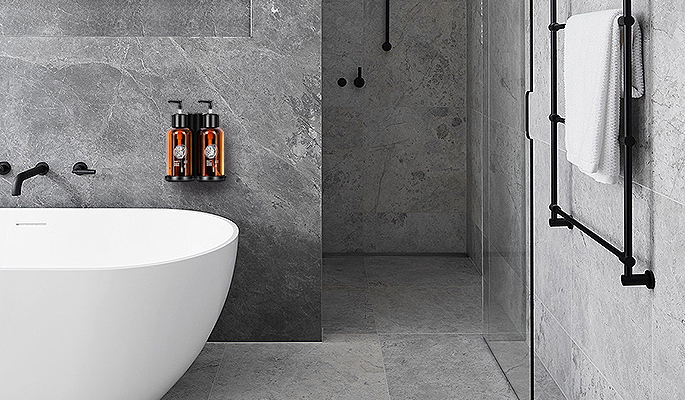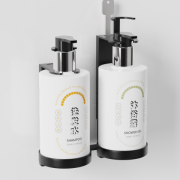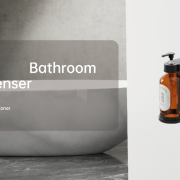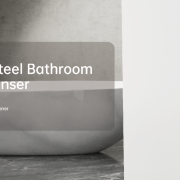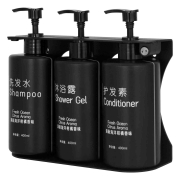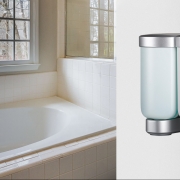Think of the most mundane object in your hotel bathroom. Chances are, the hotel soap dispenser springs to mind. Yet, this unassuming fixture holds a surprisingly rich history, silently charting the course of the hospitality industry itself. Its journey from purely functional necessity to a carefully curated element of the guest experience is a fascinating reflection of changing priorities, technology, sustainability concerns, and the relentless pursuit of comfort. Let’s trace this evolution.
The Era of Function & Frugality (1960s – 1980s): The Institutional Standard
-
The Problem: Communal soap bars. Unhygienic, messy, wasteful (partially used bars discarded), and prone to theft. Hotels needed a better solution.
-
The Solution: Enter the wall mounted dispenser. Early models were purely utilitarian:
-
Material: Durable, often industrial-grade plastic (ABS) or metal (stainless steel).
-
Design: Simple, boxy shapes. Function reigned supreme.
-
Mechanism: Basic push-button or lever action dispensing generic liquid soap, sometimes diluted.
-
Focus: Cost-efficiency, hygiene, and reducing waste (compared to bars) were paramount. The dispenser was an anonymous workhorse, blending into the tiled background. Its presence screamed “institutional efficiency,” common in motels and budget chains.
-
-
Hotel Context: This era prioritized standardization, volume, and operational cost control. The bathroom was purely functional, not a space for indulgence. The dispenser embodied this perfectly.
The Rise of Branding & Basic Comfort (1980s – Late 1990s): A Touch of Identity
-
The Shift: As competition increased, hotels began to see the bathroom as part of the brand experience, albeit minimally.
-
Dispenser Evolution:
-
Material: Plastics became slightly less industrial, perhaps in softer colors (white, beige).
-
Design: Slightly more rounded edges appeared. Branding became key.
-
Branding: Hotel logos or names started appearing prominently on the dispenser face. The generic soap was often replaced with slightly better quality, branded liquids (“Exclusively for Our Guests”).
-
Focus: Basic brand reinforcement and a perception of slightly elevated hygiene/quality over bars. While still primarily wall mounted, they became a small billboard within the room.
-
-
Hotel Context: This reflected the industry’s move towards chain standardization and establishing brand recognition. Comfort was improving, but amenities were still largely standardized and functional.
The Experience Revolution & Boutique Boom (Late 1990s – 2010s): Sensory & Style
-
The Catalyst: The rise of boutique hotels and heightened guest expectations. Every touchpoint mattered. Bathrooms transformed into sanctuaries.
-
Dispenser Transformation:
-
Material: Significant upgrade. Sleek metallics (brushed nickel, chrome), frosted glass, high-quality ceramics, and premium plastics.
-
Design: Modern, minimalist, elegant. Curves replaced angles. Design became a conscious choice aligning with the hotel’s aesthetic – from retro chic to ultra-modern spa.
-
Mechanism: Sensor technology arrived! Touchless operation enhanced the perception of hygiene, modernity, and luxury. It felt sophisticated.
-
Content: Soap became an experience. High-quality gels, lotions, shampoos, and conditioners from recognizable spa brands (Aveda, Molton Brown, L’Occitane) filled the dispensers. Scent became a powerful memory trigger.
-
Focus: Elevating the guest experience, sensory appeal, perceived luxury, and aligning with a specific design ethos. The hotel soap dispenser was no longer just a fixture; it was a design element and a quality statement. While wall mounted remained common, freestanding ceramic or glass pump bottles appeared on countertops in luxury segments, offering a more residential feel.
-
-
Hotel Context: This mirrored the industry’s intense focus on differentiation, creating unique experiences, and catering to discerning travelers. The bathroom became a key battleground for guest satisfaction and perceived value.
The Sustainable & Smart Era (2010s – Present): Responsibility & Refinement
-
The Imperative: Environmental consciousness and operational efficiency reached critical mass. Guests demanded sustainability.
-
Dispenser Innovation:
-
Sustainability: Bulk-fill systems became mainstream, especially in mid-range to luxury chains. Large, concealed wall mounted reservoirs in housekeeping carts allow staff to refill beautiful, durable dispensers in-room, drastically reducing single-use plastic waste. Materials focus on recyclability and longevity.
-
Refillable Luxury: High-end hotels often use elegant, branded ceramic or glass bottles that are professionally cleaned and refilled with premium products, combining sustainability with luxury.
-
Smart Integration: Sensor technology became more refined, reliable, and ubiquitous. Some systems even integrate usage data to optimize refill schedules and inventory management.
-
Hygiene 2.0: Touchless operation, combined with antimicrobial materials or coatings, became a hygiene standard, further solidified post-pandemic.
-
Focus: Environmental responsibility, waste reduction (eliminating mini-plastics), enhanced operational efficiency, maintaining high-touch design/aesthetics, and seamless hygiene. The dispenser embodies the hotel’s commitment to the planet without sacrificing guest comfort.
-
-
Hotel Context: This era reflects the industry’s response to global sustainability goals, guest demands for eco-conscious practices, and the need for smarter operations. It’s about aligning values (hotel and guest) and leveraging technology for efficiency.
The Present & Future: Personalization & Integration?
Where next? We see glimmers of the future:
-
Personalization: Could dispensers offer scent choices via refillable cartridges? Or adjust product type based on guest preference profiles?
-
Enhanced Smart Features: Integration with room controls (lighting, music) via the dispenser panel? Usage analytics predicting refill needs with pinpoint accuracy?
-
Material Innovation: Even more sustainable, self-cleaning, or antimicrobial composite materials.
-
Ultra-Seamless Design: Dispensers that are virtually invisible when not in use, blending perfectly into high-design walls or countertops.
Conclusion: More Than Just Soap
The journey of the hotel soap dispenser – from a purely functional, anonymous wall mounted box to an elegant, sustainable, and often touch-free element of the guest experience – is a microcosm of the hotel industry’s own evolution. It reflects the shift from mere utility to branding, from standardization to experience curation, and from operational frugality to a balanced focus on guest comfort, environmental responsibility, and technological sophistication.
Next time you press that button or wave your hand under the sensor, take a moment to appreciate this small hero. It’s not just dispensing soap; it’s dispensing decades of hospitality history, reflecting the constant strive to make the guest’s stay cleaner, more comfortable, more memorable, and increasingly responsible. The humble hotel soap dispenser has truly come a long way, proving that even the smallest details can tell the grandest stories about an industry’s journey.

